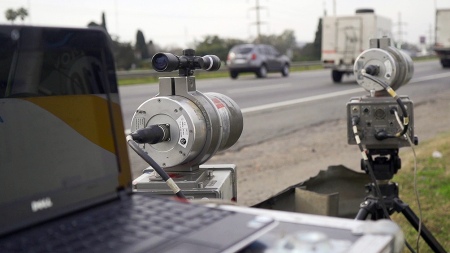The National Road Safety Agency (ANSV) maintains a total of 186 authorized cameras and radars to control speeding on national routes throughout the country in the context of the holiday period, with a greater flow of traffic, in addition to those located on provincial roads or in municipalities, as officially reported.
The ANSV pointed out that to check the validity of a fine for a radar or a camera on a provincial route, the offender must contact the court of the jurisdiction that drew up the infraction certificate and clarified that the capacity to judge the infractions is ” power of the provincial and/or municipal jurisdictions”.
“To install kinemometers or radars for measure the speed and make possible photomultas on national routes, each jurisdiction has to inform the ANSV of the reason for which it is going to install it, what speed limit it is going to measure and argue about the need to put it in that place with accident rate data,” said ANSV sources.
They must also inform about the installed equipment and the latest approval made by the INTI (National Institute of Industrial Technology), and if the operation is in charge of a private party, it must have authorization from the ANSV and National Highway.
In the case of the Atlantic Coast the routes with the greatest control of radars are 11 and 2, the latter with 20 radars placedmainly on the route that goes from the Samborombón tollbooth to the town of Dolores.
A recent survey carried out by road safety specialists revealed that a significant number of drivers, especially young people, use applications on their cell phones such as Waze or Google Maps to detect speed camera control.
The Cecaitra Observatory, the chamber of road software producing companies, carried out a survey in more than a thousand homes in CABA and Greater Buenos Aires, in 77.5% indicated that they use the applications to indicate their destination, but 17.7% said that they use them to find out the location of speed cameras, and 3.3% to find out the maximum speeds. The rest did not choose any option.
However, the answers had very noticeable differences according to the age of the respondents, since 6 out of 10 (62.6%) under 29 years of age said they used the applications to find out the location of the radars; only 1% of adults between the ages of 50 and 64 claimed to use them for this purpose.
The difference was also extreme in the option to indicate the destination, which was chosen by 37.4% of the youngest and by the majority of adults over 50 (82%).
Article 48 of the National Traffic Law establishes that “driving using headphones and continuous manual operation communication systems” is prohibited, while article 77, paragraph q, maintains that “driving vehicles using headphones and/or continuous manual communication systems and/or VHF, DVD or similar video screens or monitors in the driver’s compartment”.
“If we consider the two articles, it can be concluded that the use of both GPS and cell phone applications is not recommended while driving since four types of distractions can occur simultaneously: visual, when looking away from the route; cognitive, for example, when reflecting on a certain directive; physical, such as when a driver holds or manipulates the device, instead of driving with both hands on the wheel; and auditory, such as when listening to what the application,” said road safety specialist Facundo Jaime.


















